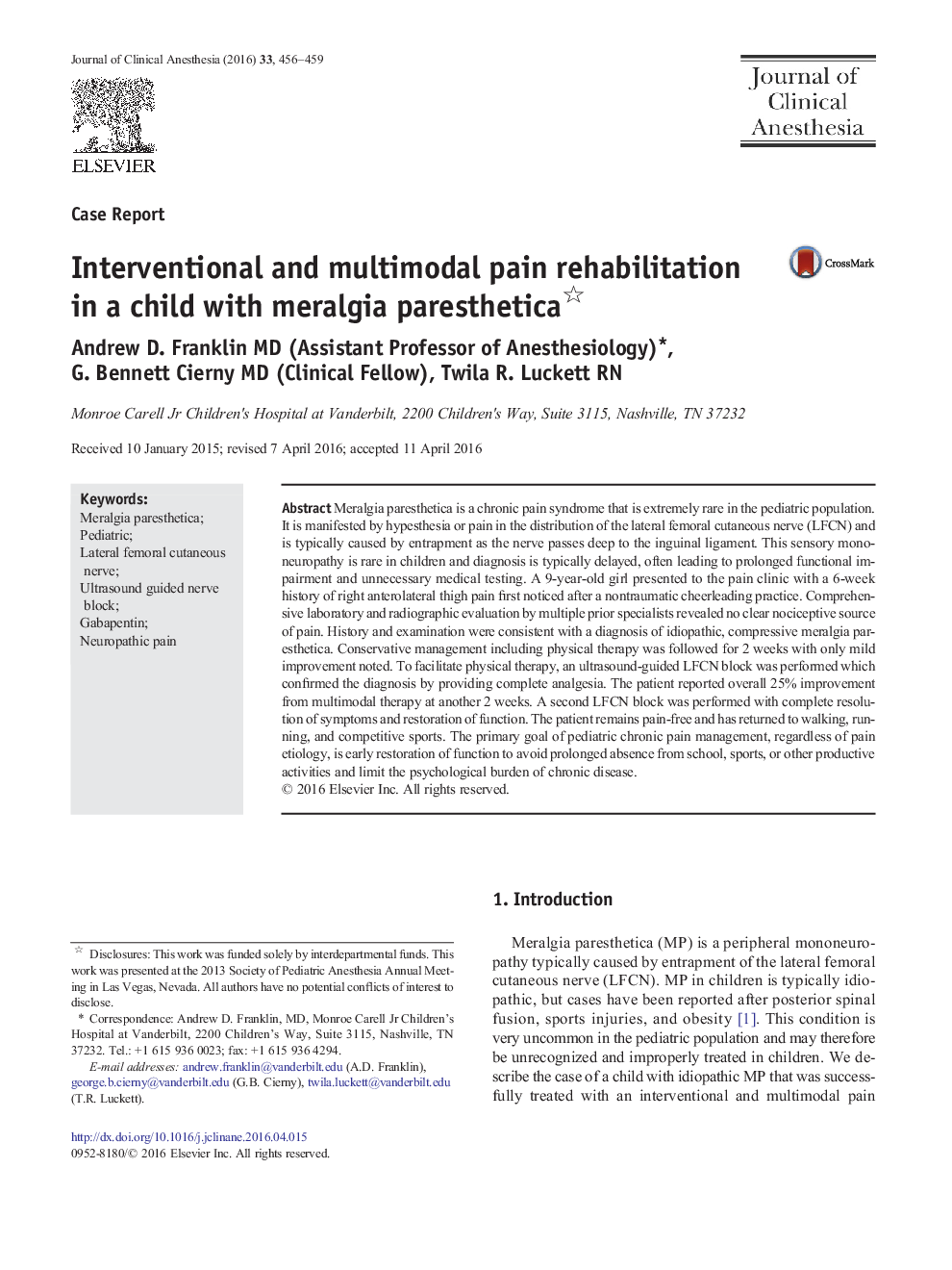| Article ID | Journal | Published Year | Pages | File Type |
|---|---|---|---|---|
| 2762160 | Journal of Clinical Anesthesia | 2016 | 4 Pages |
•Meralgia paresthetica is a chronic neuropathic pain syndrome that is extremely rare in children.•Lack of knowledge about this entity in the pediatric population may lead to unnecessary testing, improper treatment, and reductions in functional status.•Meralgia paresthetica typically presents with sensory symptoms in the anterolateral thigh without motor deficit and is caused by compression of the lateral femoral cutaneous nerve.•When conservative measures such as behavior modification, physical therapy, and nonopioid analgesics have failed, ultrasound guided lateral femoral cutaneous nerve blockade may both confirm diagnosis and hasten recovery in children.•The primary goal of pediatric pain management is early restoration of proper physical and psychosocial function.
Meralgia paresthetica is a chronic pain syndrome that is extremely rare in the pediatric population. It is manifested by hypesthesia or pain in the distribution of the lateral femoral cutaneous nerve (LFCN) and is typically caused by entrapment as the nerve passes deep to the inguinal ligament. This sensory mononeuropathy is rare in children and diagnosis is typically delayed, often leading to prolonged functional impairment and unnecessary medical testing. A 9-year-old girl presented to the pain clinic with a 6-week history of right anterolateral thigh pain first noticed after a nontraumatic cheerleading practice. Comprehensive laboratory and radiographic evaluation by multiple prior specialists revealed no clear nociceptive source of pain. History and examination were consistent with a diagnosis of idiopathic, compressive meralgia paresthetica. Conservative management including physical therapy was followed for 2 weeks with only mild improvement noted. To facilitate physical therapy, an ultrasound-guided LFCN block was performed which confirmed the diagnosis by providing complete analgesia. The patient reported overall 25% improvement from multimodal therapy at another 2 weeks. A second LFCN block was performed with complete resolution of symptoms and restoration of function. The patient remains pain-free and has returned to walking, running, and competitive sports. The primary goal of pediatric chronic pain management, regardless of pain etiology, is early restoration of function to avoid prolonged absence from school, sports, or other productive activities and limit the psychological burden of chronic disease.
